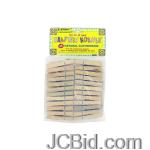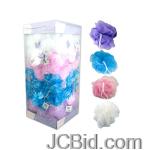
| Updated Blogs |
|
Computer Support Blog
Essensial Software for Web Based Support
HP Server and Desktop
HP ILO - Remote Tech-Support Software
More .....
|
 RSS Feed | Login
RSS Feed | Login Natural Health Remedies
know more about yourself and take care!!!
Ayurvedic Tips for Ascites Sufferer
By rickie wright at 2010-12-16 00:36:23
Ascites is a condition of pathologic fluid accumulation within the abdominal cavity. Most cases of ascites are due to liver disease usually caused by alcoholism, chronic viral hepatitis, and intravenous drug use. Tumors, obstruction in the portal vein, and diseases causing loss of protein, may also cause ascites.
Ascites is the presence of excessive fluid within the peritoneal cavity. Individuals with ascites develop physical examination findings of increasing abdominal girth, a fluid wave, a ballotable liver, and shifting dullness. Ascites can develop in patients with conditions other than liver illness, including protein-calorie malnutrition (from hypoalbuminemia) and cancer (from lymphatic obstruction).
Symptoms and Diagnosis of Ascites
When the condition of ascites is mild or in its beginning stages, there are typically no noticeable symptoms. In more severe cases where the fluids have built up excessively in the abdomen, an individual will experience a rapid gain in weight and swelling of the abdomen that causes pain and discomfort.
Some individuals may also experience swelling in the lower extremities - particularly the ankles. The swelling of the abdomen can also cause pressure on the stomach and the lungs that will result in a loss of appetite and shortness of breath.
Ascites is typically diagnosed during a physical examination that reveals the swelling of the abdomen and small amount of fluid may be extracted for a laboratory test. This laboratory test can aid in determining the cause based upon the substances that are contained within the fluid.
Ascites as a disease has been described extensively in Ayurvedic literature. Medical treatment and surgical procedures related to the management of this condition are described in detail in the Ayurvedic texts. Diet restriction is an important and interesting feature of the management of this condition. All patients with confirmed ascites are kept on an exclusive milk diet for a minimum period of six months, followed by milk and other liquid diet for the next three months, and a combined milk and light diet for the next three months. Fluid intake in the form of water is totally restricted in the first few months.
The end result of ascites happens when excess peritoneal fluid exceeds the capacity of lymphatic drainage, primary to increased hydrostatic pressure. The fluid can then be observed to visibly weep from the lymphatics and pool within the abdominal cavity as ascites. The underfill/vasodilatation hypothesis proposes that the main event in ascites formation is vascular, with reduced efficient circulating amount leading towards the activation of the renin-angiotensin system and subsequent renal sodium retention.
The classic underfill hypothesis postulates that elevated hepatic sinusoidal pressure leads to sequestration of blood in the splanchnic venous bed. This outcomes in underfilling of the central vein with diversion of intravascular volume to the hepatic lymphatics, which, like the central vein, drain the space of Disse.
Medicines are used to treat the basic pathology of the disease, and differ according to the known cause. Arogya-Vardhini, Shankh-Vati, Kutki (Picrorrhiza kurroa), Tamra-Bhasma and Sharpunkha (Tephrosia purpuria) are used to reduce inflammation and swelling in the liver, spleen and portal vein. Medicines like Punarnavadi-Qadha, Gokshur (Tribulus terrestris), Amalaki (Emblica officinalis), Guduchi (Tinospora cordifolia), Kutaj (Holharrhina antidysentrica), Patol (Tricosanthe dioica), Kutki, Saariva (Hemidesmus indicus), Patha (Cissampelos pareira) and Musta (Cyperus rotundus) are also very useful in this condition.
When the build up of abdominal fluid becomes severe, complications can arise that include limited mobility and the inability to eat an appropriate amount of food which will interfere with everyday normal functioning. A serious complication that can also occur with excess fluid in the abdomen is called "SBP" or "spontaneous bacterial peritonitis" which is an infection that causes nausea, abdominal pain and tenderness.
This condition can be very serious if left untreated and cause an infection to occur within the bloodstream, kidney failure, and mental disorientation or confusion.
Read about beauty tips Also read about causes of obesity and cancerous moles.
Permalink | Comments (0)
Comments
To add a comment please login by clicking here
JC Store | JasmineCorp
|
JCBid
|Software
Development |
Domain
Registration | Hosting
| Web
Designing | Buy
Books |
Advertise
with JCSearch |
Whois
|
IP
Locator |
Add
Search |
Shopping
| Store
|
Free Blogs |
Free
GuestBook | Free
E-Cards |
Free
Games |
Free
Tutorials |
Set
as Home | Add
to Favorite
| Suggest
a Site |
Directory
Our Portfolio
| Terms of service
| Free quote
| Tell a Friend
| Special Offer
| Job Opportunities
| games
| Usenet Groups




